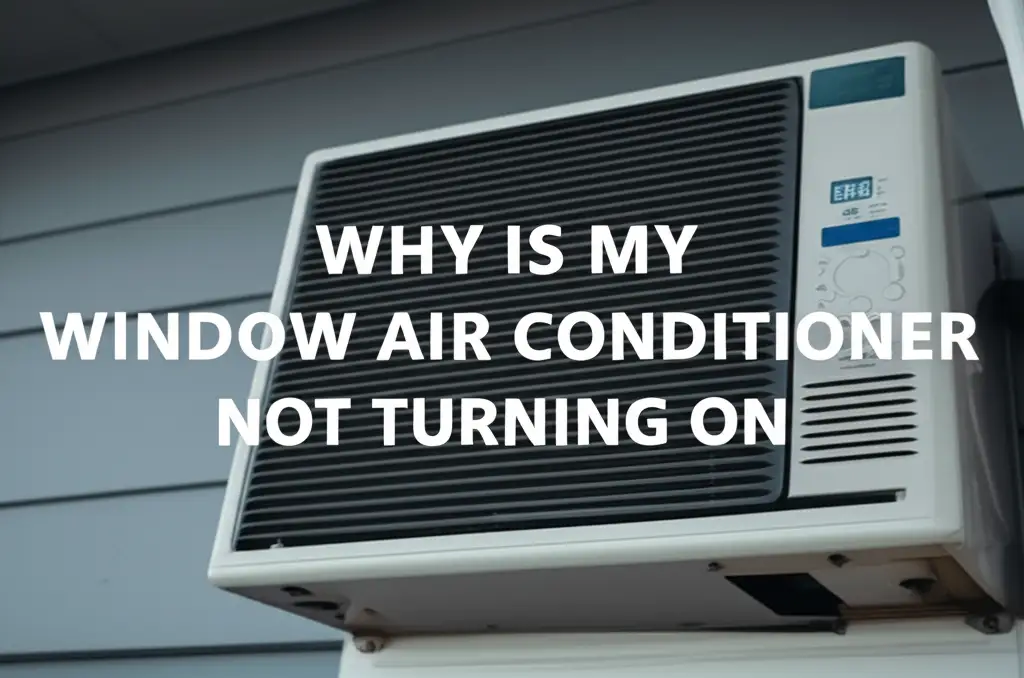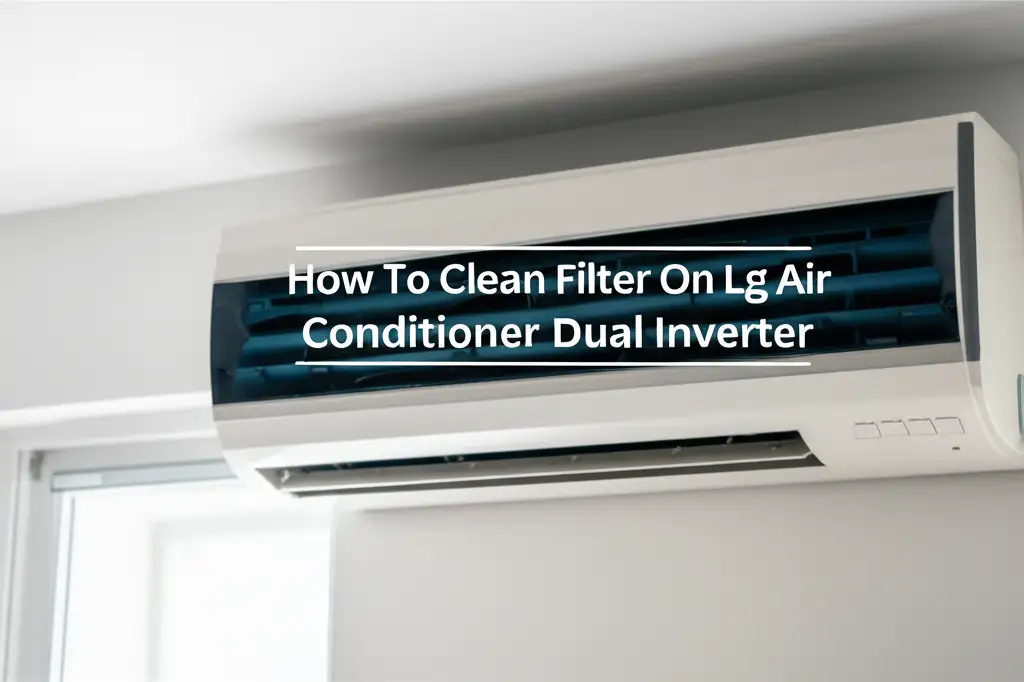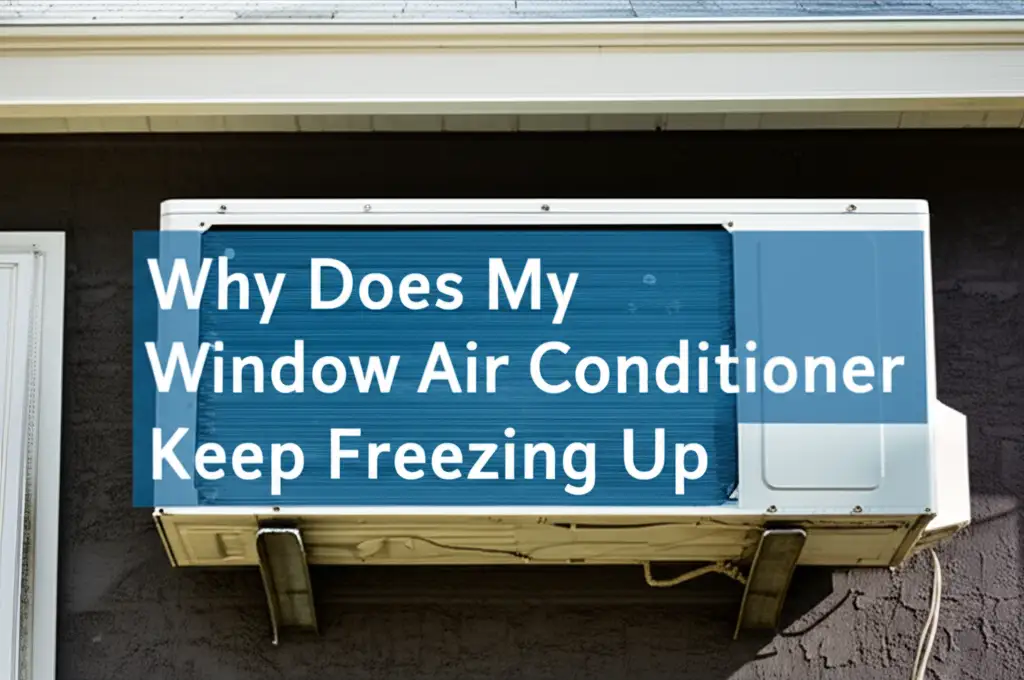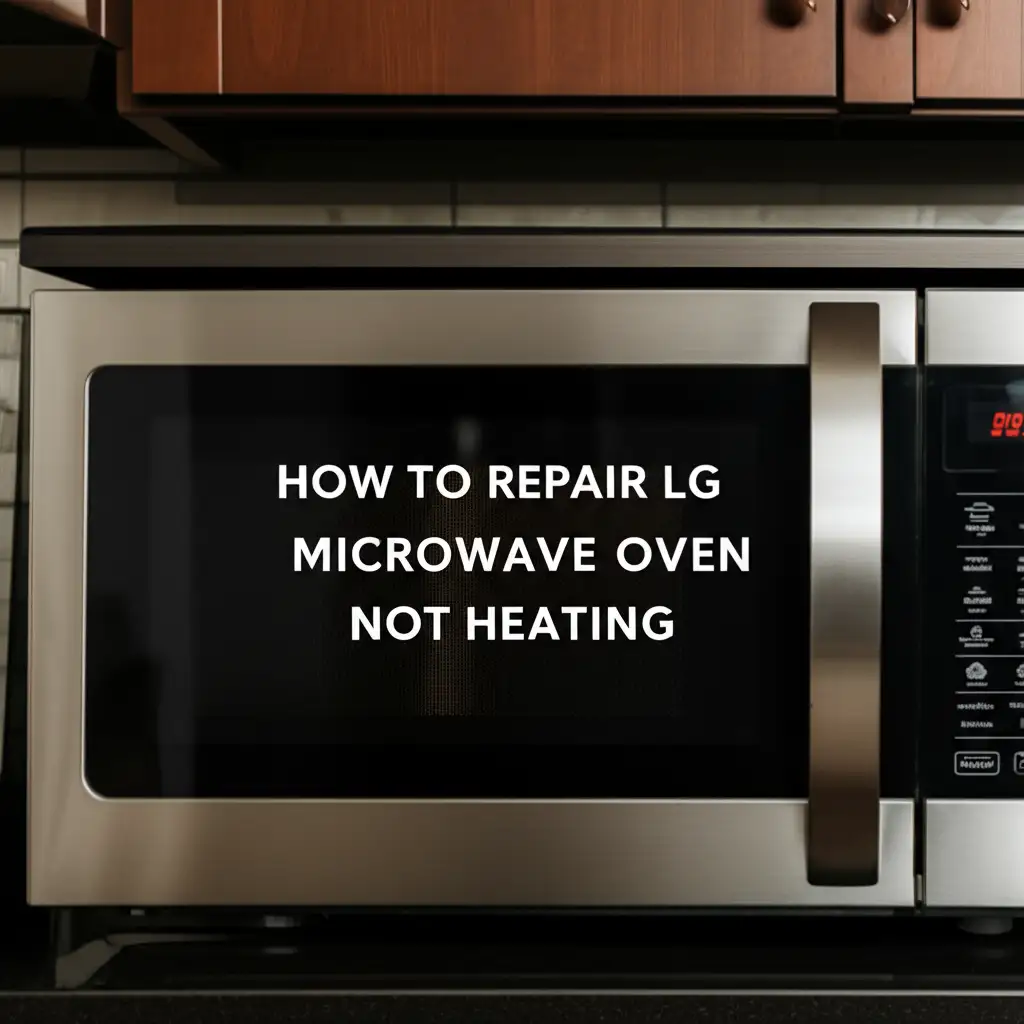· Katria Melrose · Home Appliances · 21 min read
Why Is My Window Air Conditioner Not Turning On

Why Is My Window Air Conditioner Not Turning On?
Summer heat hits hard. Your window air conditioner is a lifeline. But what happens when you press the power button, and nothing happens? You expect cool air, but you get silence. This situation can be very frustrating.
My goal is to help you figure out why your window AC unit stopped working. I will walk you through common problems. We will start with simple checks, like power sources. Then we will look at more involved issues, like internal components. You can save money by fixing small problems yourself. Let’s find out what’s keeping your AC from turning on.
Takeaway
- Always check the power supply first: outlet, cord, circuit breaker, and fuse.
- Verify your thermostat settings are correct and the remote works.
- Clean air filters and coils prevent many AC issues, including startup problems.
- Listen for fan motor sounds; a quiet unit may have a bad fan or capacitor.
- Some AC units have a reset button for simple fixes.
- Professional help is needed for complex electrical or internal component failures.
Concise Answer to Why Your Window AC Is Not Turning On
Your window air conditioner is not turning on likely due to a power issue, incorrect settings, a tripped circuit breaker, or a blown fuse. It could also have internal problems like a bad capacitor, a stuck fan, or a faulty control board. Simple checks often reveal the problem.
Power Problems: Checking Your Electrical Supply
When your window air conditioner does not turn on, power is the first thing to check. No power means no cool air. This is often the simplest fix. Start by looking at the electrical outlet.
First, unplug the AC unit. Then plug another small appliance into the same outlet. Does that appliance work? If it does not, the outlet may be dead. You might need to check your home’s main electrical panel.
Next, examine the power cord itself. Look for any cuts or frayed wires. A damaged cord cannot deliver power. This can also be a safety hazard. If the cord is damaged, do not use the AC unit.
Checking the Circuit Breaker
Your home’s circuit breaker protects circuits from overload. A window AC unit uses a lot of power. It can trip a breaker if the circuit is overloaded. Go to your electrical panel. Find the breaker labeled for the AC outlet. It might be in the “off” position or between “on” and “off.” Flip it fully to “off,” then firmly to “on.”
If the breaker trips again quickly after you try to turn on the AC, there is a problem. The AC unit might draw too much power. This suggests an internal issue with the unit. It is also possible the circuit itself is too small for the AC. For more information on why your AC might be tripping the breaker, read our guide on why does my window air conditioner keep tripping the breaker.
Inspecting the Fuse
Some window air conditioners have a fuse in the plug. This fuse acts as a safety device. If the fuse blows, no power reaches the unit. You can usually twist off a cap on the plug to access the fuse. Check if the metal wire inside the fuse is broken. If it is, replace it with a new fuse of the same type and amperage.
Be very careful when working with fuses. Using the wrong fuse can cause damage or fire. If your AC keeps blowing fuses, there is an underlying problem. This needs further investigation. It is similar to why your AC might be blowing fuses.
GFCI Outlets
Some window AC units plug into Ground Fault Circuit Interrupter (GFCI) outlets. These outlets have “test” and “reset” buttons. They provide extra safety in wet areas. If the AC is not turning on, check the GFCI outlet. Press the “reset” button firmly. If it clicks back into place, try the AC again. A tripped GFCI outlet means it detected a fault. This prevented power flow for safety.
Checking these power sources is the crucial first step. Many “dead” AC units simply lack power. Fixing these issues often gets your AC running again.
Thermostat Troubles and Control Settings
If your window air conditioner has power, the next step is checking its settings. Sometimes, the unit is not broken at all. It just has the wrong commands. This is a common oversight. My own AC has stumped me before because of simple setting mistakes.
Start with the thermostat on the unit. Is it set to “Cool” mode? Many units have “Fan Only” or “Dry” modes. These modes will not activate the cooling cycle. They might make the fan spin, but the compressor will not engage. Ensure the setting is on “Cool.”
Next, check the temperature setting. Is the temperature set lower than the current room temperature? For example, if your room is 75°F, and you set the AC to 78°F, the unit will not turn on for cooling. It thinks the room is already cool enough. Always set the temperature at least 5-10 degrees lower than the current room temperature.
Remote Control Issues
Many window AC units come with a remote control. A dead remote battery is a simple problem. It prevents you from sending commands to the unit. Try replacing the batteries in your remote. If the remote still does not work, try operating the unit manually. Use the buttons directly on the AC control panel. This tells you if the remote is the problem or the unit itself.
Sometimes, the remote sensor on the AC unit gets blocked. Make sure nothing is covering the small sensor window on the AC. Direct sunlight can also interfere with some remote signals. Adjust curtains or blinds if this is an issue.
Timer Functions and Sleep Modes
Modern AC units often have timer functions. You can program them to turn on or off at specific times. Check if a timer is active. The unit might be waiting for a programmed time to start. Cancel any active timers if you want immediate cooling.
Sleep mode is another common feature. It often raises the temperature setting over time. It also might reduce fan speed. If the unit is stuck in sleep mode, it may not respond as expected. Cycle through the modes to ensure it is in normal “Cool” operation.
Verifying all control settings takes only a few moments. It can save you from unnecessary worry. A quick glance at the display panel often reveals the solution.
Dirty Filters and Airflow Blockages
A clean air conditioner is a happy air conditioner. When your window air conditioner won’t turn on, especially if it was working recently, a blocked airflow could be the culprit. Air filters are your AC’s first line of defense. They catch dust, dirt, and pet hair. This keeps the internal parts clean.
However, a very dirty filter blocks air movement. The AC unit struggles to pull air in. This makes the unit overheat. Many AC units have safety mechanisms. They shut down to prevent damage from overheating. This means the unit simply will not turn on at all.
Pull out your air filter. Most window AC units have a removable filter that slides out easily. Hold it up to the light. Can you see through it? If not, it is time for a thorough cleaning or replacement. Rinse reusable filters with warm water and mild soap. Let them dry completely before putting them back. Disposable filters need a new one. Regular filter cleaning is a simple act of how to clean air conditioner.
Frozen Coils
A severely restricted airflow can lead to frozen evaporator coils. When air cannot flow over the cold coils, moisture on them freezes. This forms a layer of ice. This ice buildup further blocks airflow. The AC unit cannot function correctly. Its sensors detect the ice. The unit often shuts down to prevent compressor damage. It will not turn on until the ice melts.
If you suspect frozen coils, turn the AC off completely. Let it sit for several hours, or even overnight. This allows the ice to melt. You might see water dripping from the unit. Once the ice is gone, clean the filter. Then try to turn the AC back on. Regular cleaning prevents this problem. For specific issues with AC cooling, check out why is my window air conditioner not as cold as it used to be.
Blocked Vents and Unit Placement
Beyond the filter, make sure the air intake and exhaust vents are clear. Furniture, curtains, or even debris can block these vents. If air cannot enter or leave the unit freely, it will also struggle. The unit might overheat or cycle off. It may refuse to start at all.
Ensure the area around the window AC is open. Allow plenty of space for air circulation. Proper placement is important for efficiency. It also prevents the unit from overworking itself. Cleaning and ensuring clear airflow are essential maintenance tasks. They prevent many common AC issues.
Fan Motor Malfunctions
Sometimes, your window air conditioner turns on, but only the fan makes noise. Other times, nothing at all happens. A faulty fan motor can stop the entire unit from starting. The fan is crucial for both pulling in warm air and expelling hot air. If the fan cannot start, the unit’s safety features may prevent the compressor from running. This ensures the unit does not overheat or damage itself.
First, try to listen. Do you hear a hum or click, but no fan movement? This often points to a fan motor problem. Sometimes, the fan blades get stuck. Debris, wires, or even a build-up of grime can jam the fan.
To check the fan:
- Unplug the unit: Always disconnect power before touching internal parts.
- Access the fan: You might need to remove the front grill or side panel.
- Inspect for obstructions: Look for anything blocking the fan blades. Remove any debris carefully.
- Try to spin the fan manually: Gently try to turn the fan blades with your hand. If they feel stiff or do not move, the motor might be seized or a bearing could be bad.
If the fan blades are free but do not spin when powered, the motor itself is likely bad. Or, the starting capacitor for the fan motor has failed.
Capacitor Concerns
Capacitors are small cylindrical components. They give a quick jolt of electricity. This jolt helps start the fan motor and the compressor. A bad capacitor cannot provide this initial push. This results in the fan not spinning, or the compressor not starting. You might hear a clicking sound but nothing else. This is the relay trying to activate the components without success.
Replacing a capacitor can be a DIY task. However, capacitors store electrical charges. Even when unplugged, they can deliver a shock. I always discharge them safely first. If you are unsure, call a professional. Identifying the correct capacitor and installing it needs care. If the fan motor does not engage, then your window unit might not blow hard. For more on this, check out why is my window air conditioner not blowing hard.
Overheated Motor
Like other electrical components, fan motors can overheat. If the motor gets too hot, it has an internal thermal overload switch. This switch cuts power to protect the motor from damage. Once it cools down, it might reset. If your AC unit powers off after a short run and then won’t turn on again, this might be why. Clean filters and clear vents help prevent motor overheating. This ensures proper airflow and cooling.
A failing fan motor can be a significant repair. It often requires replacing the entire motor assembly. If you have confirmed the issue is with the fan, professional help might be the next step.
Compressor Issues and Starting Problems
The compressor is the heart of your window air conditioner. It circulates refrigerant to cool the air. If the compressor does not start, your unit will not cool. It might not even turn on fully. Sometimes you hear a hum or click but no cool air. This points to a compressor or its starting components.
One common reason a compressor fails to start is a faulty start capacitor. We touched on this with fan motors, but the compressor also has one. This capacitor gives the compressor the powerful jolt it needs to begin its work. Without it, the compressor simply cannot kick in. You might hear a brief hum as the unit tries to start, then silence. Or you might hear a clicking sound as a relay attempts to engage the compressor.
Another issue can be an overloaded compressor. If the refrigerant levels are too low, or if the system is extremely dirty, the compressor might struggle. It works harder than it should. This leads to overheating and a safety shutdown. The unit’s internal overload protector cuts power. This prevents severe damage to the compressor. Once the compressor cools down, it might reset. But it will likely trip again if the underlying problem is not fixed.
Low Refrigerant or Leaks
If your window AC unit has low refrigerant, it cannot cool properly. While this usually leads to an AC that runs but does not cool, it can also prevent the compressor from starting at all. Some modern units have low-pressure switches. These switches detect low refrigerant levels. They prevent the compressor from running to avoid damage. This keeps the unit from turning on.
Refrigerant leaks are serious. They require a professional HVAC technician. They must locate and repair the leak. Then they must recharge the system with the correct type and amount of refrigerant. This is not a DIY task.
Wiring and Control Board Failures
Internal wiring can become loose or corroded. This prevents power from reaching the compressor. A damaged wire might cause a short circuit. This could trip a breaker or prevent the unit from turning on. Visually inspect accessible wiring inside the unit. Look for any signs of burning or fraying.
The control board is the “brain” of your AC unit. It sends signals to all components, including the compressor. If the control board is faulty, it might not send the start signal. This means the compressor will remain off. A damaged control board often requires replacement. This is usually a job for a qualified technician.
Diagnosing compressor issues is often more complex. It typically requires specialized tools and knowledge. If you suspect a compressor problem, it’s often best to seek professional help. Replacing a compressor is an expensive repair. Sometimes, it is more cost-effective to replace the entire window AC unit.
Safety Features and Reset Functions
Window air conditioners have built-in safety features. These protect the unit from damage. They also protect you. When certain conditions are met, these features can prevent the unit from turning on. Or they might cause it to shut down suddenly. Knowing about these can help you troubleshoot.
Many window AC units have a “reset” button. This button is often found near the power cord or on the unit’s control panel. If your unit stopped working suddenly, pressing this button can sometimes solve the problem. The reset button clears any minor errors or tripped internal safety switches. It essentially reboots the unit’s system. To reset:
- Unplug the AC unit from the wall.
- Wait for 1-2 minutes.
- Press and hold the reset button for 5-10 seconds.
- Plug the unit back in.
- Try to turn it on normally.
This simple step often fixes issues. It is worth trying before anything else.
Overload Protectors
Modern AC units have thermal overload protectors. These devices monitor the temperature of the compressor or fan motor. If a motor starts to overheat, the protector cuts power to that component. This prevents permanent damage. Once the motor cools down, the protector might automatically reset. This allows the unit to start again.
If your AC unit runs for a while and then stops and won’t restart, it might be an overload protector. Give the unit plenty of time to cool down. Ensure good airflow around the unit. Clean filters also help prevent motors from overheating. If the unit keeps tripping the overload, there is an underlying issue. This issue could be a dirty coil, a failing motor, or low refrigerant.
Float Switches
Some window AC units have a condensate pan. This pan collects water removed from the air. A float switch is sometimes installed in this pan. If the pan fills too much, the float switch rises. It then cuts power to the unit. This prevents water from overflowing and causing damage. This is a common feature in units with a built-in pump or in basements.
If your unit has a full condensate pan, drain it. Clear any blockages in the drain hose. Once the water level drops, the float switch will reset. The unit should then turn on. If your unit is leaking water, this could be related. Refer to why is my window air conditioner leaking water from the front for more details.
These safety mechanisms are there for good reason. They protect your investment and your home. Understanding them helps you diagnose many common “no-start” issues.
Drainage System Issues and Sensor Problems
Your window air conditioner removes humidity from the air. This humidity turns into water. The water collects in a drain pan. It then typically drips outside. If this drainage system gets blocked, water can build up. This can cause the unit to stop working.
Many units have a float switch in the condensate pan. If water fills the pan too high, the float switch activates. This switch turns the unit off. This prevents water from overflowing into your home. It stops the unit from turning on until the water level drops.
To check the drainage system:
- Unplug the AC unit.
- Locate the drain pan: This is usually at the bottom of the unit.
- Look for standing water: If there is a lot of water, it might be blocking the float switch.
- Clear the drain hole/hose: Use a small brush or wire to clear any clogs. Mold, algae, or dirt can block it.
- Remove any collected water: You might need to tilt the unit slightly to drain it or use a wet/dry vacuum.
After clearing the drainage, the float switch should reset. Then the unit should be able to turn on. If this problem persists, you might need to clean the entire drainage system more thoroughly.
Faulty Temperature Sensors
Window AC units use temperature sensors. These sensors tell the unit the room temperature. They also monitor the temperature of the coils. If a sensor fails, it might give incorrect readings. The control board then gets wrong information. It might think the room is already cool, or that coils are too cold.
If a sensor reports extremely cold coils, the unit might not turn on. It tries to prevent freezing. If a sensor reports a room temperature below your setting, the unit will not start cooling. A faulty sensor might also stop the fan from starting. This is because the fan often turns on before the compressor.
Diagnosing a bad sensor often requires testing its resistance with a multimeter. This is typically a job for a professional. Replacing a sensor is usually straightforward once you know it’s the problem. However, accessing sensors can involve disassembling parts of the unit.
Control Board and Wiring
As mentioned before, the main control board manages all these sensors and functions. If the board itself is faulty, it may not interpret sensor readings correctly. Or it might fail to send the “start” signal to other components. Loose or damaged wiring to the sensors or control board can also cause these issues. A visual inspection of all visible wiring can sometimes reveal obvious problems like frayed or disconnected wires.
Ensuring the drainage system is clear and that sensors are functioning correctly is vital for proper AC operation. These components play a key role in the unit’s ability to turn on and cool your space effectively.
When to Call a Professional: Advanced AC Problems
You have checked the power, settings, filters, and safety features. Your window air conditioner still will not turn on. At this point, the problem likely lies deeper inside the unit. These issues often require special tools and expertise. This is when calling a professional HVAC technician becomes the best course of action.
Knowing when to stop DIY troubleshooting saves you time and prevents further damage. Here are key signs it is time to call for expert help:
- Persistent Electrical Issues: If your circuit breaker keeps tripping, or your unit keeps blowing fuses, there is a serious electrical problem. This could be a short circuit or an overloaded component. It is a safety hazard. An electrician or HVAC technician should diagnose this. They can handle high voltage safely.
- Compressor Does Not Start: If you hear a hum or click but the compressor never kicks in, it might be a bad capacitor, a seized compressor, or a control board issue. These repairs are complex. They require specific testing equipment. Replacing a compressor is very costly. Often, it makes more sense to buy a new unit.
- Fan Motor Failure: If the fan motor does not spin, even after checking for obstructions and resetting, it might be bad. Replacing an AC fan motor can be difficult. It involves specific wiring and mounting. A technician can assess if it is worth repairing.
- Refrigerant Leaks: If your unit has low refrigerant, it means there is a leak. Refrigerant is a regulated substance. Only certified technicians can handle it. They must find and fix the leak. Then they must properly recharge the system.
- Burnt Smells or Sounds: Any burning smell or unusual grinding/scraping sounds when you try to turn on the unit are red flags. Turn the unit off immediately. These indicate serious internal damage. Continuing to run it can cause fire or more expensive damage.
- Control Board Malfunctions: If the display panel is blank, flickers, or the buttons do not respond, the control board might be bad. Replacing a control board is precise. It requires finding the exact compatible part. This is best left to professionals.
A professional technician can quickly diagnose these problems. They have the training and experience. They also carry common replacement parts. They can tell you if the repair is cost-effective. Sometimes, older units are simply beyond repair. Or the cost of repair approaches the cost of a new unit. In such cases, they can advise you on replacement options. Investing in professional diagnosis ensures the problem is fixed correctly and safely.
FAQ Section
Q1: Why does my window AC hum but not turn on?
A1: A humming sound with no operation often means the motor (fan or compressor) is trying to start but cannot. This usually points to a faulty start capacitor. The capacitor gives an initial power boost. Without it, the motor lacks the push to begin. It could also be a seized motor.
Q2: My window AC turns on for a second then turns off. What is wrong?
A2: If your AC quickly turns on and then off, it usually indicates a safety shutdown. This could be due to an overloaded circuit, an internal component overheating, or a faulty sensor detecting an issue. Check your circuit breaker and ensure proper airflow around the unit.
Q3: Can a dirty filter prevent my AC from turning on?
A3: Yes, a very dirty air filter can prevent your window AC from turning on. A blocked filter restricts airflow, causing the unit to overheat. Many AC units have safety features that shut down the system or prevent it from starting to prevent damage when overheating.
Q4: How do I reset my window air conditioner?
A4: To reset your window air conditioner, first unplug it from the wall. Wait for one to two minutes. Then, locate the reset button, often on the control panel or plug. Press and hold it for 5-10 seconds. Plug the unit back in and try to turn it on.
Q5: What is the lifespan of a typical window air conditioner?
A5: A typical window air conditioner lasts about 8 to 10 years. This lifespan depends on usage, maintenance, and the quality of the unit. Regular cleaning and timely repairs can help extend its life. Poor maintenance can shorten it considerably.
Q6: Why would my brand new window AC not turn on?
A6: If your brand new window AC unit won’t turn on, first check the power supply (outlet, plug, circuit breaker). Ensure the unit is properly seated and settings are correct. It could also have a manufacturing defect. Contact the retailer or manufacturer for warranty support if basic troubleshooting fails.
Conclusion
A silent window air conditioner on a hot day is frustrating. But many “no-start” issues are simple to fix. We covered the most common reasons why your window air conditioner is not turning on. We started with the easiest checks. Power issues are the number one culprit. Always check your outlet, power cord, circuit breaker, and fuses first. Next, confirm your thermostat and remote settings are correct. Simple mistakes here are common.
My advice is to work through these steps systematically. Check the air filters and ensure good airflow. Look for a stuck fan or listen for compressor struggles. Remember the reset button. It can often clear minor glitches.
- window AC troubleshooting
- AC won't start
- window air conditioner repair
- AC power issues
- air conditioner maintenance





